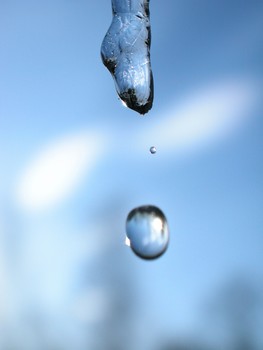Stay Informed
Popular Articles
- Hiatal Hernia: Hidden Cause of Chronic Illness
- Small Intestinal Bacterial Overgrowth (SIBO)
- Applied Lymphology: Unlocking the Secret to Pain Relief
- An Introduction to Constitutional Iridology
- The Low Down on Liver Detoxification
- An Energetic and Emotional Approach to Cancer
- Fat Facts
- Marrow in the Bones
- Blood Type and Nutrition
- Cardiac Herbs: Beyond Hawthorn
Quick Search
The School of Modern Herbal Medicine




Phase 1 and Phase 2 Detoxification
- 4/8/2009
- Categorized in: General Health
This is page 2 of a two-part article.
 Phase 1 Detoxification is carried out by 10 different families of enzymes, which are produced with the aid of 35 different genes. Reactions produced by these enzymes include: oxidation, reduction, hydrolysis, hydration and dehalogenation. Oxidation is the process of adding electrons; reduction is the process of removing electrons. Hydrolysis is the process of breaking a substance apart using water, while hydration is the process of adding water to a substance. Dehalogenation is the process of removing a halogen (chlorine, bromine, iodine, or fluorine) from a substance.
Phase 1 Detoxification is carried out by 10 different families of enzymes, which are produced with the aid of 35 different genes. Reactions produced by these enzymes include: oxidation, reduction, hydrolysis, hydration and dehalogenation. Oxidation is the process of adding electrons; reduction is the process of removing electrons. Hydrolysis is the process of breaking a substance apart using water, while hydration is the process of adding water to a substance. Dehalogenation is the process of removing a halogen (chlorine, bromine, iodine, or fluorine) from a substance.
After undergoing Phase 1 transformations, toxins have an electrical charge and are more water-soluble. Toxins which have been altered by Phase 1 enzymes are known as intermediary metabolites.
There are several problems that can occur during, or because of, Phase 1 detoxification. First, the Phase 1 detoxification process can produce super oxide radicals (a form of free radicals). Second, some of the intermediary metabolites are reactive oxygen intermediates (free radicals again) and are actually more toxic than the original substance. Some of the toxic intermediate metabolites include: teratogens (which cause malformations in the fetus), mutagens (which mutate cells) and carcinogens (which cause cancer). Third, certain substances may also stimulate Phase 1 enzymes and cause an overload in the Phase II system. These include cigarette smoke, glucocorticoids and anti-convulsives and compounds in charbroiled meats.
The most prevalent enzymes in the Phase 1 system are the P450 enzymes. The more P450 enzymes induced in the liver, the more toxic intermediates will be present in the body. P450 enzymes are induced by caffeine, alcohol, dioxin, high protein diets, oranges and tangerines, paint fumes, steroid hormones, organophosphorus pesticides, and many drugs, including sleeping pills, contraceptive pills and cortisone.
P450 enzymes are inhibited by carbon tetrachloride, carbon monoxide, barbiturates, quercetin and naringenin (found in grapefruit). In fact, grapefruit juice can inhibit the breakdown of certain drugs in the liver.
Hopefully, all of my readers understand that free radical damage is involved in inflammation, which leads to heart disease, cancer and aging. So, it's clear the body needs extra doses of antioxidants to protect it during detoxification. NSP used to have a product called Target Immune that increased production of an enzyme called superoxide dismutase (SOD), which dismantles superoxide radicals. Now, SOD is directly available in the supplement SOD with Gliadin. This product could be very valuable for people who are having a “healing crisis” while trying to detoxify.
Other antioxidants can help protect the body from the intermediate metabolites that are the by-products of Phase 1 Detoxification. Nutrients that help protect the body from these reactive oxygen intermediates include: carotenes, vitamin A, vitamin C, selenium, copper, zinc, manganese, co-enzyme Q10, thiols (compounds found in garlic, onions and cruciferous vegetables), silymarin (from milk thistle) and oligomeric proanthocyanidines (Grapine).
Obviously, Thai-Go (or Zambrosa in other countries) could also be helpful here. I learned at the convention that many NSP Managers are getting good results when taking VitaWave and Thai-Go together. This would make sense, as the extra vitamins and minerals would aid internal detoxification, while the antioxidants would protect the body during the process.
Phase 2 Detoxification
Of course, it is very important for the intermediate metabolites created in Phase 1 detoxification to undergo Phase 2 as quickly as possible. There is growing scientific evidence suggesting that certain diseases are the direct result of damage to the body from poor Phase 2 detoxification. Some of the diseases that may be caused by toxic intermediate metabolites and free radicals include cancer, Parkinson's disease, fibromyalgia, chronic fatigue, lupus and immune dysfunction.
The Phase 2 enzymes add another substance to the intermediate metabolite, a process called conjugation. The substance added is called a conjugate. Phase II conjugates include: amino acids, sugars, glutathione (which is stimulated by N-Acetyl-Cystine), methionine, sulfur (found in garlic, onions and cruciferous vegetables like broccoli and cabbage) and acetyl co-A.
Just as there are substances that induce Phase I enzymes, there are also substances that increase activity of Phase II detoxification enzymes. Flavonoids, found in fruits, vegetables and many herbs, help induce detoxification. Ellagic acid, found in red grape skin (an ingredient in Thai-Go), induces several Phase II enzymes while decreasing Phase I activity. Other substances that can induce Phase II enzyme activity include garlic, rosemary, soy and cabbage.
Once the substance has been transformed in Phase 2 detoxification, it has to be eliminated from the body through the bile or the urine. Eliminating toxins through the kidneys requires generous water intake, so drinking water during any cleanse is critical. Eliminating toxins through the bile requires fiber because fiber latches onto toxins in the bile and carries them out of the body. Otherwise, toxins can be reabsorbed in the gut.
I hope that this information has helped you understand why nutrition (building) is so important to detoxification (cleansing), especially in weak and malnourished people.
